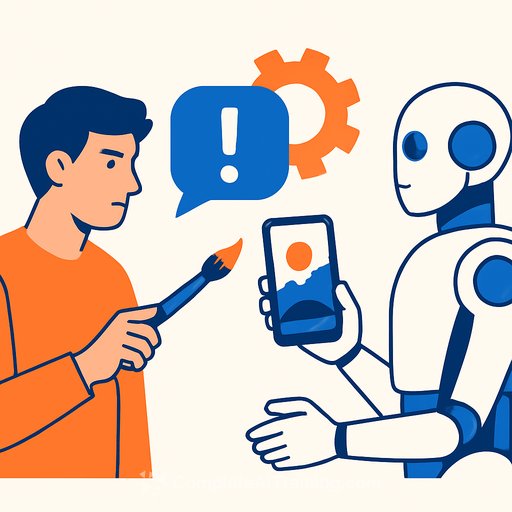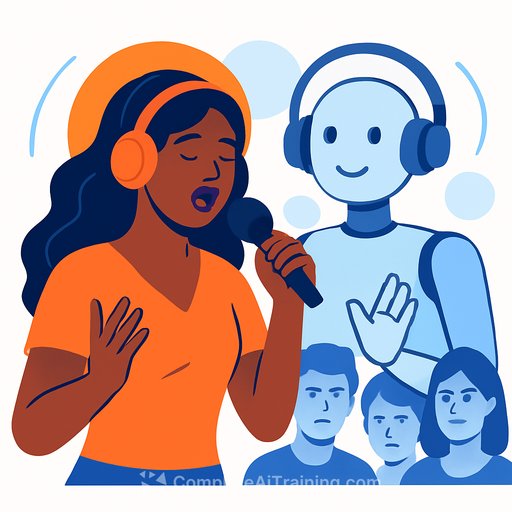We Need More Canada in the Training Data: Practical Guidance for Creatives
Canada is debating how to regulate AI. The government, led by AI Minister Evan Solomon, has launched a short consultation that's drawing heat for its timeline. In parallel, the Standing Committee on Canadian Heritage is studying AI and the creative sector with a wider mix of voices.
Here's the bottom line for creatives: treat AI as a tool, demand transparency, protect your options, and push for more Canadian content in the training data. Overreacting with blunt regulation could hurt creators more than it helps.
1) Freedom to Create: Use AI, Label the Output
AI is already baked into writing, film, music, design, and post-production. Trying to block it is unrealistic and could limit your edge. The real risk isn't the tool-it's audience confusion caused by low-quality, unlabeled AI content.
Clear labeling increases trust in your work and sets you apart. Sectors like news, video, music, and AI services should work together on transparency so audiences can tell what's human-made, AI-assisted, or fully AI-generated.
- Label AI-assisted or AI-generated work in credits, descriptions, or captions.
- Keep a simple "process note" for clients: what tools you used and why.
- Ask collaborators and vendors to disclose AI use in their deliverables.
- Press platforms to support content provenance and visible AI indicators.
2) Copyright and Training Data: Balance, Don't Block
Most AI outputs don't copy works directly. The bigger legal question is inputs-training on large datasets. Many cases suggest this can fall under fair use/fair dealing, or text and data mining (TDM) exceptions in other regions. Over-indexing on AI regulation in Canada could raise costs, stall innovation, and push development elsewhere-hurting creators who benefit from better tools and new demand.
Canada needs copyright rules that stay competitive: strong fair dealing and clear space for TDM so creators and startups aren't stuck behind legal and financial barriers. For reference, see Canada's Copyright Act (fair dealing) and the EU's TDM exceptions:
- Set clear license terms on your site and portfolios (what's allowed, what isn't).
- If you want exposure in AI results, avoid blanket blocks that remove your work from training data entirely-balance reach with control.
- If you want tighter control, use machine-readable signals and terms that specify training restrictions.
- Join sector groups pushing for balanced rules, not barriers that raise your costs.
3) Canadian Presence in AI Results: Put More Canada in the Data
Traditional Canadian content quotas or discoverability rules don't map well to AI systems. They can even backfire if platforms respond by excluding Canadian sources from training-shrinking your presence in AI outputs.
The better move: make it easier for models to learn from Canadian culture, news, and art. That means transparency around datasets, lower-cost access to high-quality Canadian material, and public AI systems that intentionally include Canadian content.
- Publish work on crawlable pages with clear terms and credits so it's findable and usable.
- Contribute to Canadian archives, public datasets, and cultural institutions that can be included in responsible training.
- Support policies that fund open, high-quality Canadian datasets rather than blunt content quotas.
- Ask AI services to disclose major data sources and to include diverse Canadian inputs.
What to Ask of Platforms and Policymakers
- Dataset transparency: disclose major sources and allow opt-in/out at a meaningful level.
- Provenance and labeling: easy ways to mark AI-assisted work across media.
- Balanced copyright: keep fair dealing strong and clarify TDM so Canada stays competitive.
- Public investment: build Canadian datasets and public-interest models that showcase local culture.
- Lower barriers: reduce costs for accessing and using Canadian material in training.
For Creatives: Next Steps
- Adopt a simple AI use policy for your studio or practice and share it with clients.
- Label AI use in your work; keep proof of process for future licensing or disputes.
- Decide your stance on training (allow, restrict, or license) and state it clearly.
- Publish more of your best work on authoritative, crawlable sources with proper metadata.
The goal isn't to freeze the status quo. It's to widen your creative freedom, protect your rights, and increase Canadian presence across the tools people use every day. Transparency, balanced copyright, and more Canada in the training data will get us there.
If you want practical, up-to-date AI skills for creative work, explore these resources:
Your membership also unlocks:






